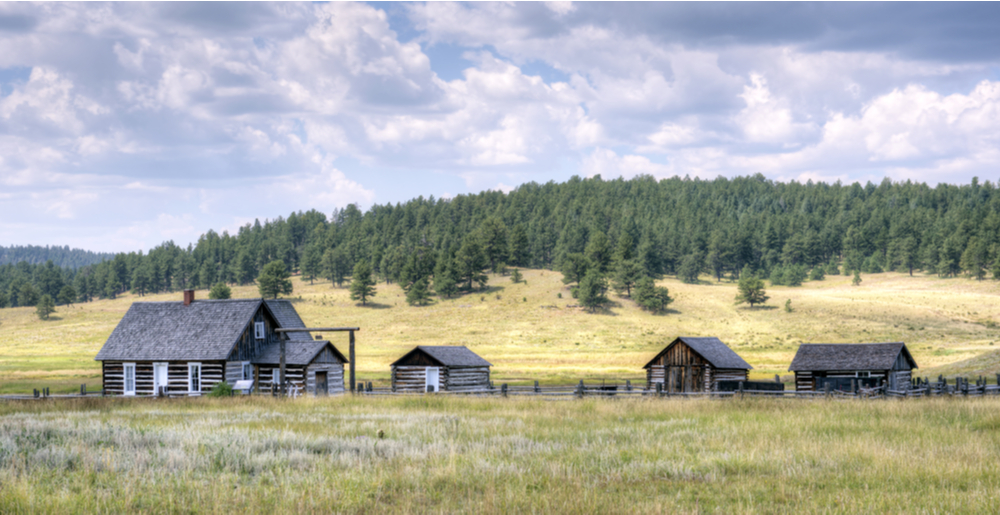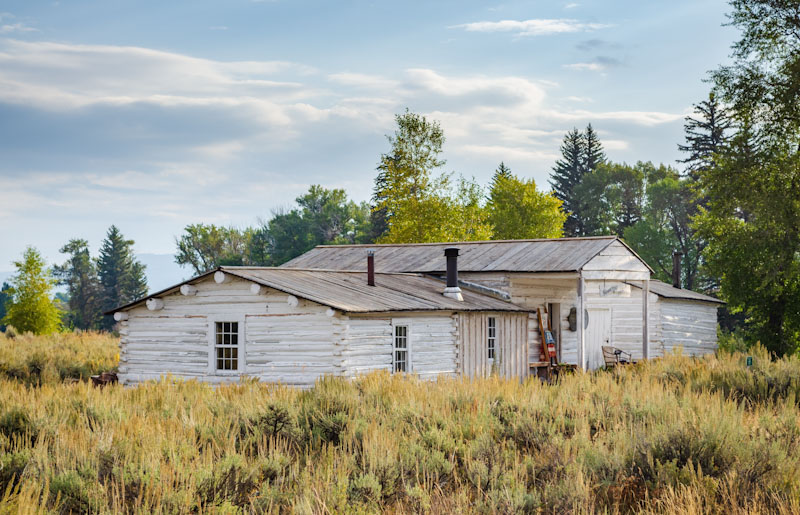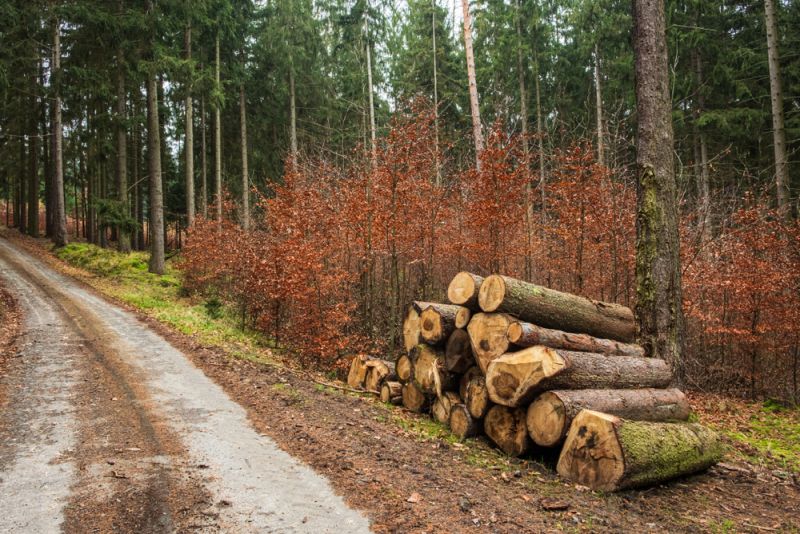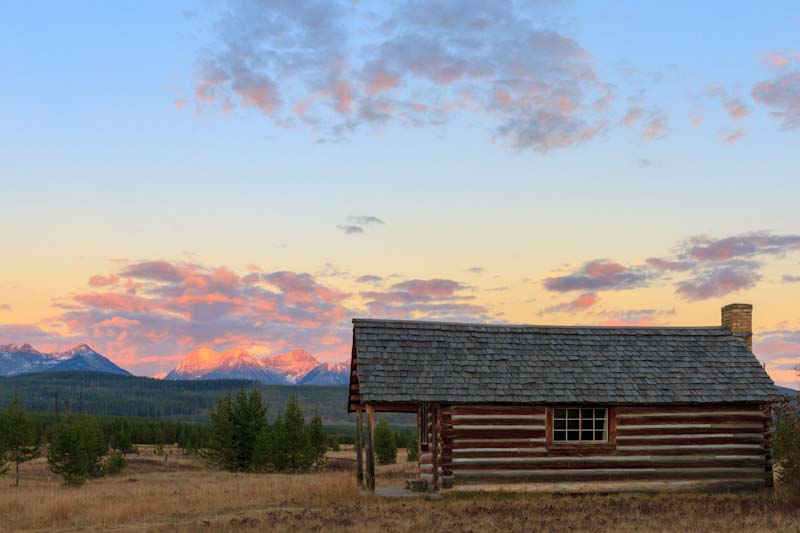When our pioneer ancestors arrived out west, the transcontinental railroad hadn’t been built yet, so everything they needed to make the desert bloom had to be procured locally or arduously transported 1,300 miles by wagon or handcart from Illinois to Salt Lake.
If you’ve ever been backpacking, you know that pounds equal pain, so folks had to procure everything they could from the local environment. They kept an eagle-eyed watch for mineral springs that could provide baking soda, tar pits, and straight timber like the lodgepole pine. The lessons they learned are applicable today to making a self-reliant homestead.
What would you need to make and keep a homestead self-reliant? Today, the world is so interdependent and globalized that people seldom think in terms of self-reliance. Well, you can’t have a healthy interdependent relationship unless the parties to it are the first independent. Today, we are dependent on or vulnerable to attack by unstable developing nations. Much of our food, oil, and banking come from half a world away. Globalizing systems we depend on to live engineers’ fragility right into them. Being self-reliant and able to procure the things we need but do not produce ourselves locally fosters independence and self-reliance. Produce what you can and then buy what you can’t produce locally.
In this article, I have listed some of the most critical substances for a homestead to have, where they come from and even the basics of how to make them. If you’d like to delve deeper into this subject than I can go in an article, a couple of good books I recommend reading are The Knowledge: How to Rebuild Our World from Scratch by Lewis Dartnell and The Settler’s Guide by Keith Smith.
Water

Especially out West, a homestead is doomed to fail without a reliable year-round supply of water. When looking for a budget homestead, you will likely have to accept some compromises. Water shouldn’t be one of them. We need water daily to drink, wash, cook, and to water livestock, crops, and gardens.
Water played a huge role in my own relocation. Cache Valley is an anomaly in the West in that water flows into the valley from three directions, even causing artesian wells and springs. If you are dependent on city water, make sure that the system is gravity fed from end to end. Otherwise, long-term loss of electricity will result in disease and instability. End to end gravity-fed water doesn’t guarantee stability, but it certainly contributes to it.
When forced to use surface water it must be treated first. I know people who don’t treat water and are still walking and talking but understand that the further down a watershed you get, the more polluted the water gets because of agricultural and industrial runoff and you just have more animals, people, and birds contaminating the stream or river with fecal matter, urine, garbage, chemicals, heavy metals and more. Effective water treatment is not difficult to achieve, so it’s just not worth the risk. Even if your surface water source is OK today, there is no guarantee it will remain that way, especially in an infrastructure failure than drives those now using city water to use surface water sources. I have seen heavily polluted surface water all over the world. All it takes is one band of people who lack the education or who don’t care to ruin a small source of surface water.
Fertile Soil

To grow food, you need water, sunshine, and good soil. Take a soil sample in and get it analyzed to see what amendments are needed to garden in it. If you have the money, you can buy fertile topsoil. I have heard many a plan to plow under the lawn and plant a garden with seeds purchased online. Without proper soil amendment or bringing in topsoil, a watering system, and locally purchased heirloom seeds adapted to local soil and weather patterns, I feel obligated to warn my readers that many of these efforts will end in failure. A little preparation now, while it’s easy, will go a long way in an emergency.
If you live in a townhome or apartment, that’s OK. You can still create a pot garden, container garden, or vertical garden. It is vitally important that you develop a green thumb. Less than two percent of Americans grow any of their own food at all! You want the fact that you are in that top 2% on your survival resume.
Timber

Without trees, there would probably not be any human beings and certainly no cities or civilizations. Timbered acreage and the ability to turn it into logs, dimensional lumber, and firewood is a tremendous boon for a homesteader.
Everyone knows that wood can be burned to produce light, heat, and wood ash. Today, fewer people are aware of the many useful organic compounds that have also been derived from wood through history. Wood ash gives us alkali for lime and soap. Wood pyrolysis is the use of heat to separate wood into its components: wood gas, vapors, and charcoal.
Charcoal
The charcoal-making process reduces wood to pure carbon, producing charcoal, which can be further processed into activated charcoal, but the byproducts of this reaction are the precursors for other valuable substances.
Wood-Gas
With modifications, internal combustion engines can use wood gas as fuel instead of gasoline. That means that a renewable supply of wood can power generators, trucks, and tractors. This knowledge is important enough that when gas prices rose, FEMA produced instructions to build a design of wood gasifier called a stratified downdraft gasifier, which solved several of the drawbacks of earlier designs. Russia used wood gas to power trucks in forested parts of the nation when gasoline was rationed during WWII.
Wood Vapors
Wood vapors can be separated into pyroligneous acid and crude tar. Pyroligneous acid can be further separated into methanol, acetone, and acetic acid from which vinegar is made. From crude tar, turpentine, pitch, and creosote are derived.
Potash
Another product of wood ash is potash which is a source of potash fertilizer, potash lye, potassium chlorate, potassium nitrate (saltpeter), and permanganate of potash (also known as the legendary survival chemical potassium permanganate.) I’ll describe how potash is produced under the heading soap.
Lime
According to Lewis Dartnell lime would be the first substance needed by a community trying to rebuild civilization from scratch. Why lime, and what is it? Lime refers to calcium-containing inorganic minerals composed primarily of oxides and hydroxides, but Dr. Dartnell refers to calcium carbonate and homesteaders need it to maintain agricultural productivity. Raw calcium carbonate is called agricultural or “ag” lime. It is used to lower the pH of acidic soils which decrease the availability of nutrients, especially phosphorus. Liming fields makes both manure and chemical fertilizers more effective by ensuring that more of the nutrients are available to the plants instead of getting washed away.
The most abundant source of calcium carbonate is limestone. Fortunately, limestone is soft and easily quarried.
Quicklime
When calcium carbonate is heated in a kiln, to at least 900 degrees centigrade, it decomposes into calcium oxide (quick or burned lime), which is extremely caustic and reactive to moisture, and carbon dioxide gas. Homesteaders use quick lime to:
- Maintain standards of hygiene
- Smelt metals – Quicklime is used in basic oxygen steelmaking to smelt steel at a ratio of 30-50kg per ton of steel to neutralize acidic oxides of silicon, aluminum, and iron to produce molten slag.
- Make mortar and concrete – R
Slaked Lime
When quicklime is added to water, it reacts violently with water molecules to make calcium hydroxide, also known as slaked lime or hydrated lime. Hydrated lime is both strongly alkaline and caustic, which makes it useful for homesteaders to:
- Keep buildings cool in summertime – Whitewash is slaked lime mixed with tallow or other ingredients, depending on the recipe. Whitewash inhibits the growth of bacterial, reflects the summer sun and it cheaper than paint, so it gets used to paint tin roofs, adobe dwellings in the desert southwest, military barracks, fences, poultry sheds, and daries.
- Treat drinking water – Slaked lime is a flocculant, which means it binds together small particles suspended in water, causing them to drop out of suspension. Water is treated with the flocculant, allowed to settle, and then much cleaner water is decanted off the top of the container, improving the taste of water, greatly increasing the life of water filters and helping both water treatment chemicals and UV treatment methods to kill pathogens more effectively.
- Make mortar – Mortar is water mixed with sand and then slaked lime.
- Make plaster – Mix water with less sand, slaked lime, and any fibrous material to make plaster.
- Make cement or concrete – The Romans made cementum from slaked lime and volcanic ash, pulverized pottery, or pulverized brick. Cement sets much quicker than mortar and is much stronger, enabling it to bond aggregate or rubble to make concrete. Concrete is a favorite building material for homestead foundations because it is resistant to bullets, fire, and all forms of natural disasters.
- Dispose of dead bodies – Quicklime is the whitish powder spread on mass graves to prevent the spread of disease and to control odor.
Soap
*** Safety Tip *** Never make soap in an aluminum pot. Aluminum reacts with strong bases creating hydrogen gas which is caustic and explosive.
Soaps are made from fats and oils. The best come from coconut, palm, castor, and olive oils. Breaking lard down into soap is accomplished by a process called saponification using an alkali, breaking the bonds between fatty acid chains. Fats and oils don’t mix with water so they must be hydrolyzed. Fats are acids, so mixing them with an alkali neutralizes them, yielding water and a salt … or hydrolyzing them. The first source of alkali for soapmaking use by your ancestors was probably wood ash. Mix potash or soda ash into a boiling pot of fat or oil and you’ll produce soap.
Potash
The part of wood ash that they wanted was the white ashes, which are non-combustible minerals, which they got by shoveling ashes into a pot of water. Then they skimmed off everything that floated and left everything behind that sank by stirring the pot, letting it settle and decanting the water containing the minerals they wanted off into another pot, which they boiled dry, leaving the minerals known as potash.
Soda ash & iodine
Subjecting kelp to the same process yield soda ash, (also known as washing soda or sodium carbonate) and iodine. Today, soda ash is produced in large quantities using the Solvay Process, but for that, we need ammonia. Washing soda is used to make glass, soften water, as a food additive, as an inexpensive and weak base, and is used in toothpaste.
Lye
Lye is an even more effective saponifying agent created by reacting slaked lime with potash or soda ash to produce either potassium hydroxide (caustic potash) or sodium hydroxide (caustic soda) which are both known as lye. Lye makes hard bars of soap which are useful for all sorts of washing chores.
Ammonia
Ammonia is another easily produced alkali. Its source is fermented mammalian urine which contains the compound urea. Allowing bacteria to grow in urine ferments urea into ammonia. Ammonia is a key ingredient in the Solvay Process which applies industrial chemistry to produce washing soda (sodium carbonate), baking soda (sodium bicarbonate), soda ash, and calcium chloride (used to create activated charcoal.) Without ammonia, we couldn’t create the fertilizers that feed us or the explosives that keep us free, so this nasty smelling chemical earns a special place in our homestead substances.
Beekeeping
If you have sunshine, water, and land that produces flowering plants, you may want to consider beekeeping. Bees give us honey and honeycomb to eat and sweeten food, beeswax for canning and candles and they pollenate our gardens, fields, and orchards.
The first beekeepers kept bees in fixed comb hives which honey cannot be harvested from without damaging the comb. They also can’t be easily or thoroughly inspected for parasites or disease, so to keep bees, you need to invest in modern beehives, protective clothing, and a smoker to calm the bees.








clergylady | September 14, 2020
|
A very interesting article. I’d never really thought about the benefit if white washing structures. I do know hardworking wives white washed their homes every year or two. Whether it was for the fresh appearance or the bebefits to health and the building I do not know.
Understanding why things work is often as important as how things work.
Thanks.
Cache Valley Prepper | December 6, 2020
|
Yes there is so much information that was part of our cultural memory just a generation or two ago that is quickly becoming lost. Old books on homesteading are a good source for that kind of info. They can often be found for a dollar or two in thrift stores and I recommend adding a few to your paper library.